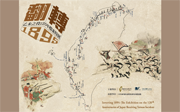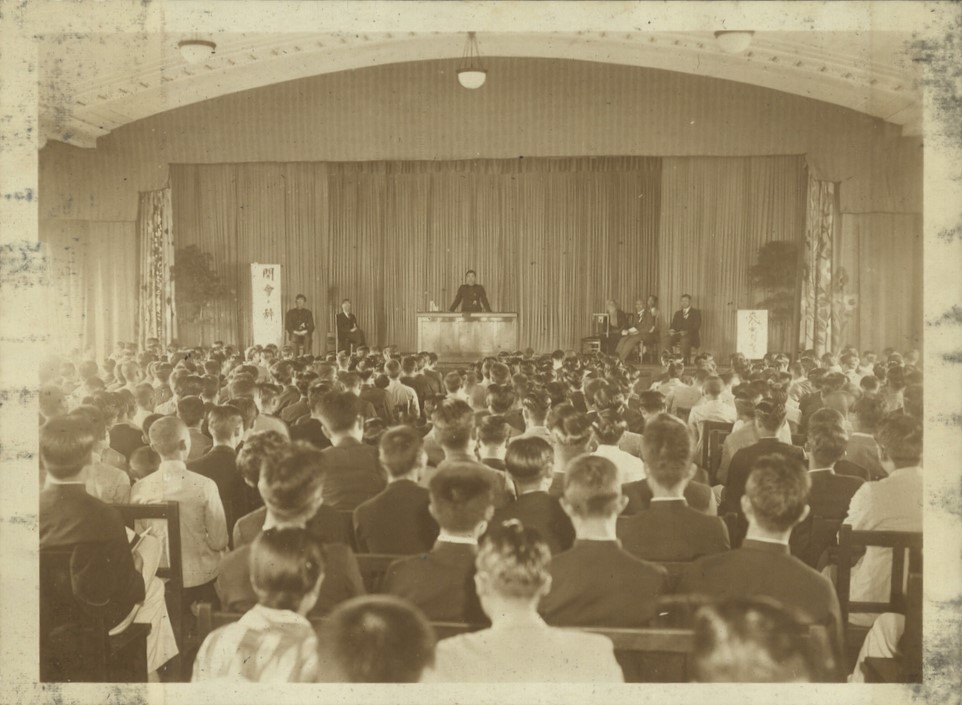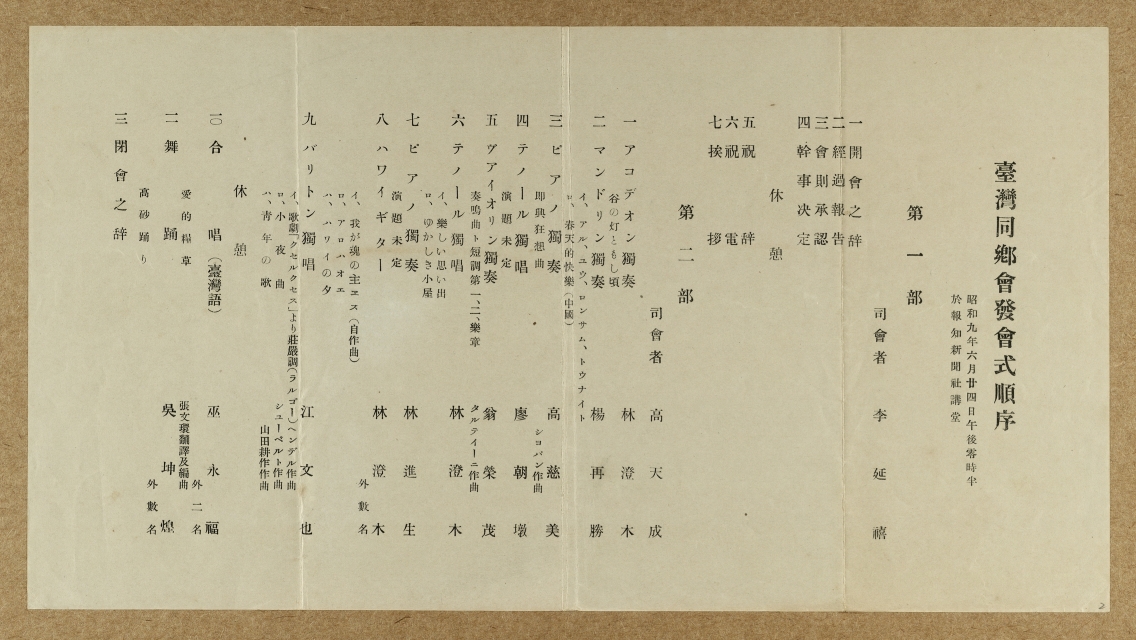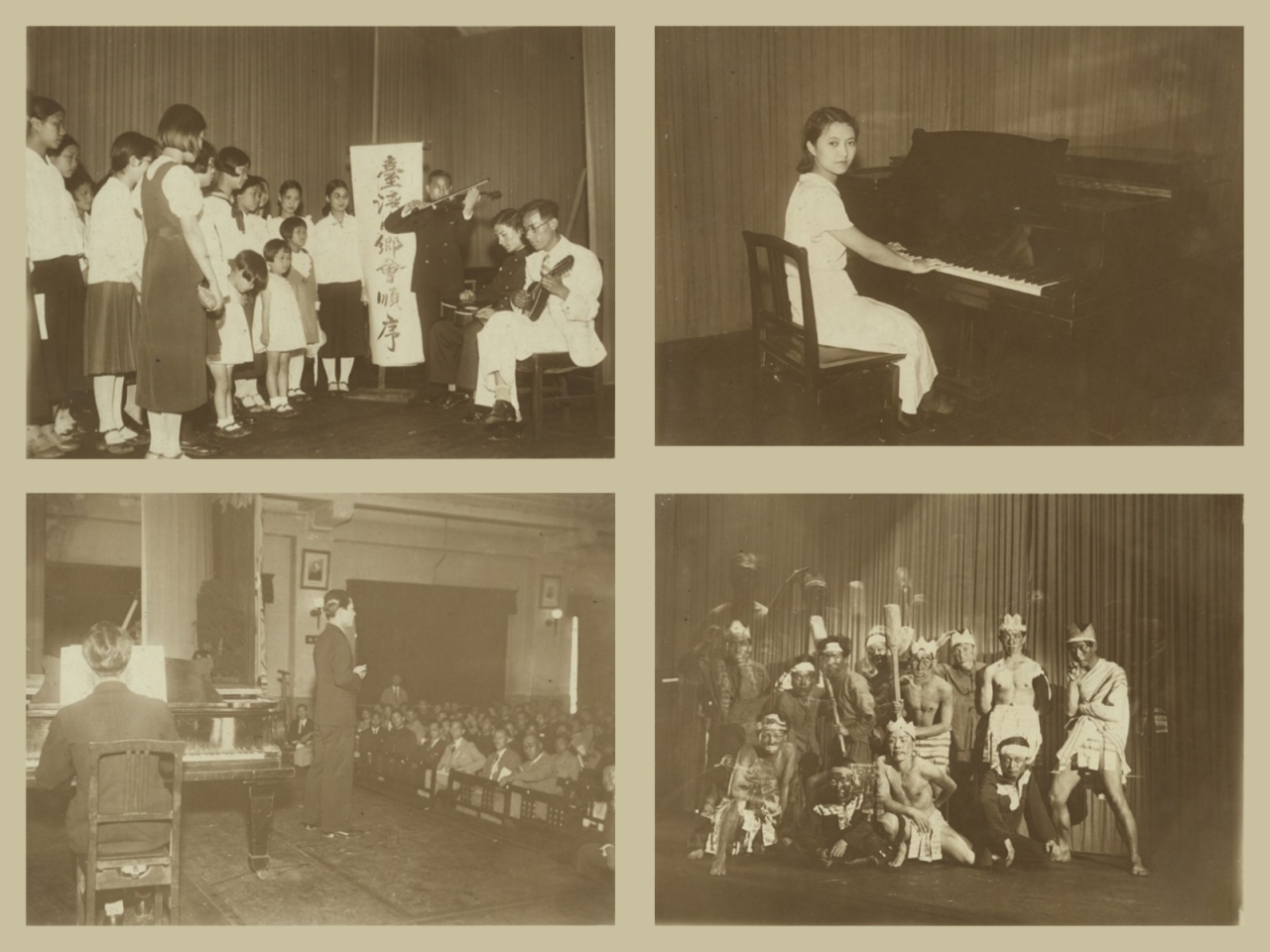|
The Homecoming Concert Tour was organized by the Taiwanese Association in Tokyo. At the time, the number of Taiwanese students studying in Japan exceeded 2,000. With the efforts of pioneers such as Yang Zhao-jia, the founding meeting of the Taiwanese Association was held on June 24, 1934, at the Hochi Shimbun Hall in Tokyo. The turnout exceeded expectations, and Yang Zhao-jia later recalled this as the peak of unity among Taiwanese living in Japan. Yang Zhao-jia (1892–1976, a native of Taichung, Qingshui) was an influential figure during the Japanese colonial era, advocating for local self-governance and promoting social and cultural movements in Taiwan. He studied in Tokyo during his youth, returned to Taiwan after graduation, and served as an instructor at a public school before becoming the first Mayor of Qingshui. In 1926, he returned to Japan to study political economy at Waseda University, during which he actively participated in the movement for establishing a Taiwanese parliament. After graduating, he returned to Taiwan in 1930 and led the Taiwanese union of local autonomy. In addition to his political and social activism, Yang Zhao-jia strongly supported and sponsored art and cultural activities, believing that achievements in the arts could exert a more profound influence than political movements, inspiring the spirit and confidence of the Taiwanese people.
Figure 1: The Founding Assembly of the Tokyo Taiwanese Association on June 24, 1934
Source: Photographs Related to the Taiwanese Association, Yang Zhao-jia Collection (LJK), 1934, Digital Collection of Archives of Institute of Taiwan History, Academia Sinica. At the founding conference of the Taiwanese Association, in addition to formally announcing the association’s bylaws and electing officers, there were musical performances and dance shows. The performers were all students who had studied in Japan, including vocal performances by Lin Cheng-mu (林澄沐) and Jiang Wen-ye, piano and violin performances of Western classical music by Gao Ci-mei, Lin Jin-sheng (林進生), and Weng Rong-mao (翁榮茂), as well as a Taiwanese song chorus (a rendition of “The Grain and Grass of Love”, translated and arranged by Zhang Wen-huan (張文煥), and a dance performance by the indigenous Takasago-zoku (高砂族). The inclusion of cultural and artistic performances at the founding conference was not only to foster camaraderie, mutual assistance, and strengthen the ties among the members of the association, but also highlighted the efforts of key figures such as Yang Zhao-jia to promote both local Taiwanese heritage and multiculturalism.
Figure 2: Program of the Founding Assembly of the Taiwanese Association
The program of the association’s founding ceremony shows that, in addition to the assembly itself, musical and dance performances were the highlights of the event. Source: Founding Documents of the Taiwanese Association, Yang Zhao-jia Collection (LJK), 1934, Digital Collection of Archives of Institute of Taiwan History, Academia Sinica.
Figure 3: Photographs of the Entertainment Program at the Founding Assembly
Top left: Violin and other musical performances; Top right: Gao Ci-mei’s piano performance; Bottom left: Jiang Wen-ye’s solo singing; Bottom right: Takasago-zoku dance performance. Source: Photographs Related to the Taiwanese Association, Yang Zhao-jia Collection (LJK), 1934, Digital Collection of Archives of Institute of Taiwan History, Academia Sinica. |
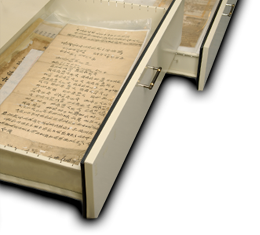 |


